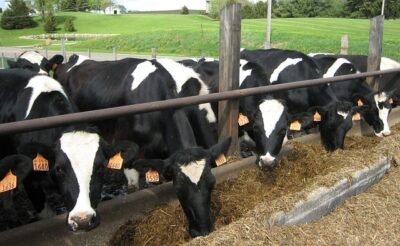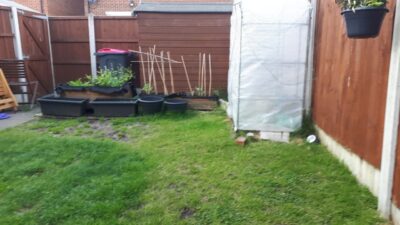An Introduction To Seed Saving
In this Article...
Preserving Nature's Abundance
Seed saving is a timeless practice that allows gardeners and farmers to take control of their own food production, preserve genetic diversity, and protect our agricultural heritage. In the context of British gardens, seed saving takes on a special significance, as it allows us to cultivate and propagate traditional varieties that have been passed down through generations.
One of the primary reasons for saving seeds is to conserve genetic diversity. In a world where a handful of commercially available seed varieties dominate the market, saving seeds ensures that lesser-known, local varieties do not disappear. These heirloom and heritage seeds often possess unique flavours, colours, and traits that may have been lost in the process of commercialization. By preserving these seeds, we celebrate our cultural and agricultural history and maintain a connection to our roots.
Moreover, saving seeds enables us to cultivate plants that are adapted to local growing conditions. Seeds collected from plants that have thrived in specific regions over time are well-suited to the local climate, soil conditions, and pests. These seeds carry the genetic traits that have allowed them to flourish in the area, making them more resilient and productive compared to generic commercial varieties. By saving and replanting locally adapted seeds, we can develop a self-reliant food system that is less reliant on external inputs.
Seed saving also promotes food security and self-sufficiency. By saving and sharing seeds within our communities, we reduce our dependence on seed companies and ensure a diverse range of crops for future generations. When we have the ability to grow our own food from saved seeds, we become less vulnerable to disruptions in the global food supply chain.
Getting started with seed saving is relatively straightforward, but it does require some knowledge and attention to detail. It begins with selecting open-pollinated plants, which produce offspring that closely resemble the parent plant. These plants are ideal for seed saving, as their genetics remain stable over generations. As the plants reach maturity, it is essential to harvest the seeds at the right time. Each plant has specific guidelines for seed harvesting, whether it involves waiting for the seed pods to dry or collecting the seeds from the fruit.
Fruit Trees:
Fruit trees offer an abundance of delicious varieties, and saving their seeds allows us to perpetuate those flavours and characteristics. Here are some techniques for saving seeds from popular fruit trees:
Apples: Collect ripe apples, extract the seeds, and air dry them for a week. Store them in a cool, dry place.
Peaches: Remove the flesh from ripe peaches, wash the seeds, and dry them for several days. Store in a cool, dry location.
Pears: Cut open the ripe pear, remove the seeds, and wash off the pulp. Air dry the seeds and store them in a cool, dark place.
Vegetables:
Vegetable seeds are readily saved and offer an opportunity to grow your favourite varieties year after year. Here are some techniques for saving seeds from common vegetables:
Tomatoes: Squeeze seeds and pulp into a container, add water, and ferment for a few days. Rinse, dry on a non-stick surface, and store in a cool, dark place.
Peppers: Allow peppers to fully ripen on the plant. Harvest, remove the seeds, and air dry them before storage.
Cucumbers: Allow the cucumbers to ripen on the vine until they turn yellow. Cut open, scoop out the seeds, rinse, and air dry.
Flowers:
Saving seeds from flowers allows us to perpetuate their beauty and share them with others. Here are some techniques for saving seeds from popular flowers:
Sunflowers: Allow the flower heads to dry on the plant until the back of the head turns brown. Cut off the head, rub to remove the seeds, and air dry.
Marigolds: Leave the flower heads on the plant until they dry and turn brown. Remove the seeds, clean, and store in a cool, dry place.
Once the seeds have been harvested, they should be properly cleaned and dried to remove any debris or moisture that could lead to mould or decay. Properly dried seeds can be stored in a cool, dry place, such as a glass jar or an envelope, ensuring their viability for future planting. Some gardeners also choose to create seed libraries or community seed banks, where seeds can be shared and exchanged, further fostering a sense of community and promoting seed diversity.
It’s important to note that while seed saving is a widely practised and beneficial activity, there are legal considerations to keep in mind. Some countries have regulations surrounding the sale and distribution of seeds, particularly those protected by patents or intellectual property rights. However, for personal use and non-commercial purposes, seed saving is generally regarded as a traditional and legal practice. Seed saving is not just about preserving plant genetics but also about safeguarding cultural heritage, many heirloom varieties hold cultural significance and tell the stories of our ancestors’ agricultural practices.
In conclusion, seed saving is a valuable and empowering endeavour that allows us to preserve genetic diversity, maintain local adaptation, and foster a sense of community. By saving and sharing seeds, we contribute to the resilience of our food systems, while honouring our agricultural heritage. In the context of British gardens, seed saving plays a crucial role in preserving traditional varieties that are deeply rooted in our cultural identity. So, let’s embrace the art of seed saving and ensure that the seeds of our past continue to blossom in our gardens for generations to come.



